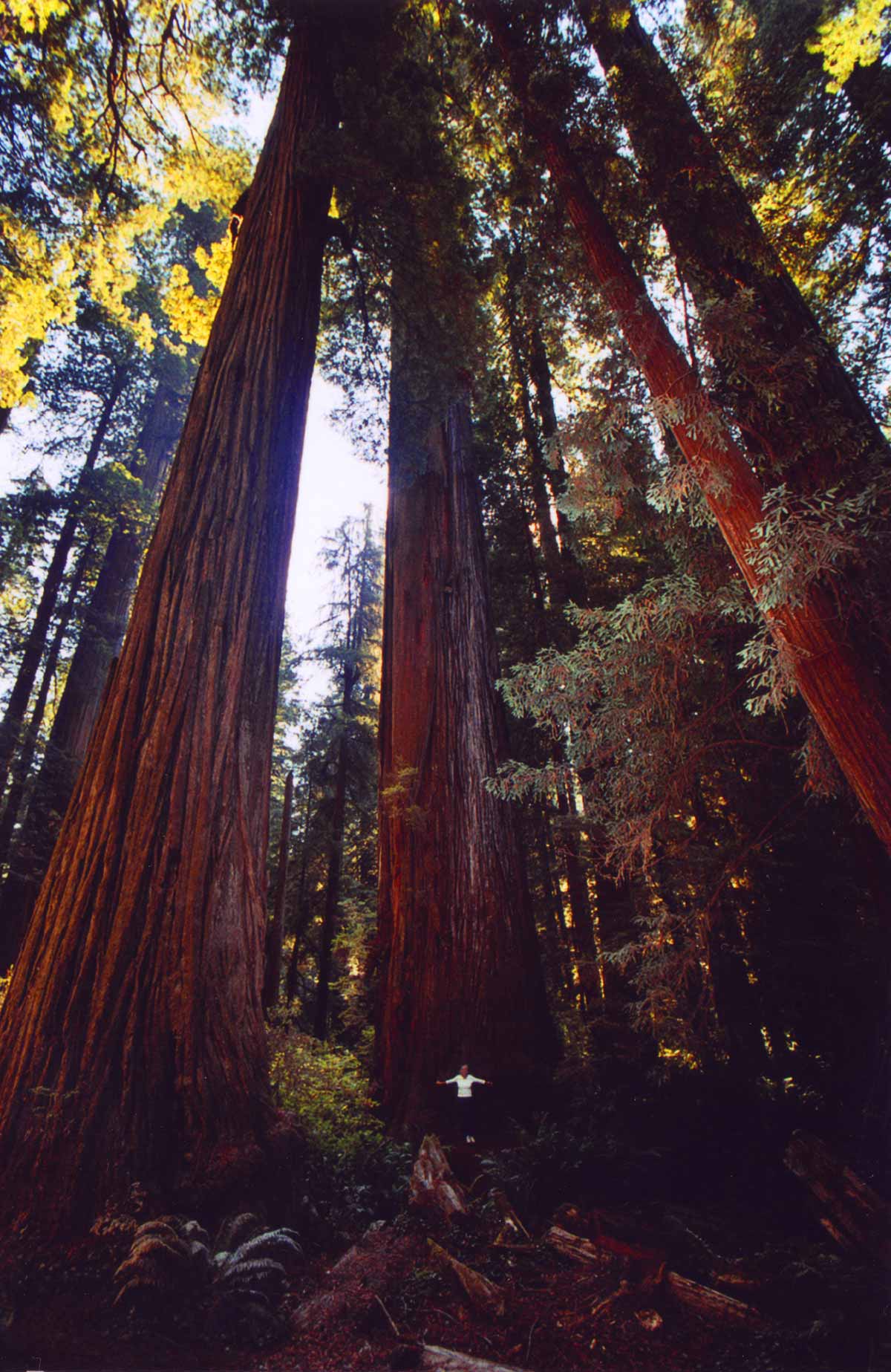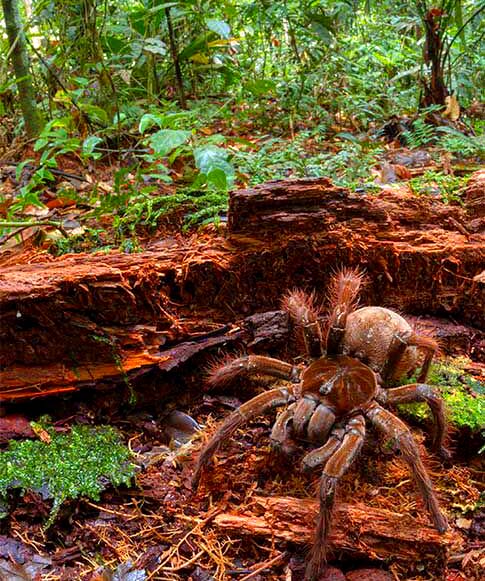

|
Jedediah Smith Redwoods State Park:
The northwestern region of California rivals Yosemite in its
attractions. When you visit it for the first time, you will naturally
be most interested in seeing the ancient, towering redwoods, certainly
one of the greatest nature displays in the world.
There are two ways to get to Jedediah Smith Redwoods State Park. Our
favorite, the one we took recently, starts just south of Crescent City
with a left turn off Hwy. 101 to Humboldt Road. Go north one mile to
reach Howland Hill Road which then for 9.9 miles follows the course of
an old wagon road.
The scenery is breathtaking. The redwoods humongous. Bring your camera
and a picnic lunch.
Wend your leisurely way to Hwy. 199, turn left, and follow the road to
Highway 101. From here it's less than 4 miles to Crescent City to your
left, or about 10 miles to the Oregon border to your right.
All about the Redwoods:
Two species of Redwoods in California:
The larger of the species, the Big Tree (Sequoia gigantea), occurs only
on the western slopes of the Sierra Nevada from the American River on
the north to Deer Creek on the south, and between elevations roughly of
4,000 to 8,500 feet.
The Coast Redwood (Sequoia sempervirens) occurs in the Coast Range of
California only as far south as Monterey and always within the coastal
belt of sea fogs.
The non-technical distinctions between the species are that the Coast
Redwood stumps sprouts, while the Big Tree reproduces only from seed;
that the Redwood attains a maximum diameter above the root swelling of
about sixteen feet, while the Big Tree reaches twenty-five or even
thirty feet; that the Redwood is taller, more graceful and occurs in
heavy forest stands, while the Big Tree is larger in diameter, of
richer color, and occurs usually in isolated groves. The chief
characteristic of the Redwood is grace; that of the Big Tree is
majesty.
Coast Redwoods:
Redwood root structure: The fallen redwood has exposed its root system
Redwoods have no tap root. Instead, the supporting roots penetrate
outward. Because of the shallow subsurface roots, redwoods are highly
dependant on the thin upper layers of the forest floor for their
support and nourishment.
Redwood bark: The bark is one of the reasons redwoods live for such a
long time - routinely runs to 500 years up to 2,000 years. Redwood bark
is thick and asbestos-like, which keeps the cambium layer from burning
during forest fires. Scars seen today could b hundreds of years old.
Water-drawing ability: Engineers are impessed with the tree's
water-drawing ability, since it is no mean feat for an organism to
transport vast amounts of moisture up a 300-foot trunk and then
transpire the wetness into the atmosphere at the rate of 500 gallons
per day.
Quality of wood: Redwood not only resists fire and rot, but also works
easily, insulates well, is good at taking paint and stain, and often
contains beautiful grains and figures.
|


|
Madrone Park |
Map |
News |
Links |
Photos |
Cartoons |
Sale |
California |
Forest |